TRANSCRIPT:
CLICK HERE TO DOWNLOAD THE VALGS FRAMEWORK DOCUMENT
Charles Pakana (Victorian Aboriginal News)
In 2021, the Victorian Government released an innovative new strategy designed to guide the state’s local governments towards greater and more meaningful collaboration with local Aboriginal community and Traditional Owner groups. Given the name the Victorian Aboriginal Local Government Strategy, or, using a rather clumsy acronym, VALGS, it focuses on seven key pillars ranging from awareness and engagement through to economic participation. Joining me today on the podcast is one of the authors of that strategy, Peek Whurrong man Jason Mifsud.
Jason, thanks for your time brother.
Jason Mifsud:
Thanks, Charles
Charles:
Pleasure, Jason. The VALGS strategy, Look, let’s be really frank, local governments around Victoria and even Australia have relied very much for a long time on reconciliation action plans. What was the need to design something new? Not necessarily advocating that it’s replacing a RAP, but why did local government need something?
Jason:
It’s a really good question and I think at the outset what we heard during the consultations with over 83% of the 79 local councils through Victoria is a number had Reconciliation Action Plans, a number of sort of considering them and a number of had them and had let them lapse for a variety of particular reasons, but fundamentally the reason why the new strategy. Is more fit for purpose is it actually looks and feels like a local council would operate on a day-to-day basis. So it wasn’t necessarily local governments having to reorganise their ambition or their activities to accommodate a templated format that a reconciliation action plan demands you do. That’s not a bad thing, but councils are a bit more complex than just fitting 3 domains of reconciliation. And then there was this big translation piece that many of them had to do. And when you’re doing strategic translation, there’s an expertise that you need to do that. Then there’s, you know, there’s resourcing you need to do that. And what local council was telling us during the process was they were spending more time trying to work out how to bridge the reconciliation action plan domain into a local council domain as opposed to just doing the work of reconciliation.
Charles:
So, what were some of the key problems, though, that local governments were finding?
Jason:
Well, I think the confidence is one that we heard a lot. So, there was this sort of broad sweeping ambition around knowing local community better, engaging the local community better, and lifting up the ambitions of local community better. But the confidence of people within local councils to actually follow a clear and cohesive road map towards not only those relationships, but the outcomes of those relationships. So yeah, we hear about cultural competency a lot in the world of reconciliation. More and more I am seeing and hearing confidence is the bigger challenge these days. And the example I’ll give to that Charles is so not saying competence is not important, I think confidence has replaced it in terms of priority. So what I hear more than anything these days in local government, in state government. You know, in private enterprises, we just don’t want to do the wrong thing. We don’t want to say the wrong thing. We don’t want to upset the wrong people.
Charles:
But surely that’s got to relate to a VALGS approach just as much as a RAP approach.
Jason:
Yeah, absolutely.
Charles:
So how does the VALGS address that particular issue ?
Jason:
Well, it lets council be council, so councils organise themselves not dissimilarly, as I said, over 83% of the local councils during the development of the strategy. Within one or two sort of areas they all pretty much organise themselves similarly. You know they have, they manage local libraries, they have a child, maternal child health, they do planning, they do place naming etcetera, etcetera, all the things that you would know local councillors do. So across the 79 there is not a lot of difference. Now they might believe there are, but there’s not like being objective about it. You’re splitting hairs if you’re arguing that one council is doing something uniquely different to another. The fundamentals are not changing across the 79 and arguably across, you know, all local councils throughout the country.
Charles:
It’s a matter of scale and geography.
Jason:
Scale and geography and then, you know, management, leadership, resourcing, blah blah blah. So what the strategy allowed local council laws to do and councillors to do is just they didn’t have to learn a new language around what local government do. So they didn’t have to learn the language of a Reconciliation Action Plan and then do that translation piece. So when we started to sort of formulate the framework, local councils are saying, yeah, I can see myself in this, you know, yeah, I can see how this would complement our council planning process. I can see how our town planners could look at this and measure ourselves on where we sit within the spectrum of working with Traditional Owners, getting place names on the on the place name register to then you know adopt into you know new developments etcetera, etcetera and those sorts of things. So council didn’t have to do much more than what they already do. Pretty well, by and large. So that was what we found to be the unique difference is a lot of people didn’t know what a RAP was and if they knew it they spent had to spend a lot of time and effort and resources doing this. Translation between the way a RAP would ask you to organise your reconciliation efforts versus how the strategy has been developed in most local councils, if not all that we’ve spoken to and worked with. Subsequent to the launch of the strategy, they’re not spending time and effort trying to understand where they fit into it. They’re spending all their effort into engaging the Aboriginal and Torres Strait Islander community that are within their boundaries, both Traditional Owner and other, and then working out what are the relationships they had to look like for success to be delivered in any of those particular areas.
Charles:
Now, when we spoke about this a couple of years ago and we did the interview very soon after it came out, and we did that for NITV radio and for our listeners that interview was actually on the Victorian Aboriginal News website. We discussed that this actually wasn’t intended to replace the RAP, that it could work in conjunction with a Reconciliation Action Plan. Do you still hold true to that belief?
Jason:
Yeah, it was my, it was my view at the time and it and it still largely is, I mean the Reconciliation Action Plan is a strategy like it’s a game plan, it’s a road map to reconciliation so. I think one of the things that we have seen since this plan was adopted and now being adapted across various local governments in Victoria, people are actually understanding that this equally is a framework for local councils to work to. So it isn’t, If you do these seven things, you’re going to be there, more reconciled, like it isn’t a Bible to reconciliation. It isn’t a sure bet that if you do these things you are more reconciled within your particular community, so they have frameworks and guidelines and road maps towards working with local communities. And as we know, from one local council to the other to another, the ambition of the local Aboriginal community changes, let alone the capability and the confidence of a local council. So, RAPS still have their place. But however, I do think that as this matures, local governments will work their way through the conversion of where RAPs might have played a role to what this strategy will do for that local council. So the ambition, I think, is more important than which strategy people follow. But what we know, and as I said, what we’re doing and seeing and working with a number of local councillors on is this looks and feels like local government. So nobody’s having to do these big translation pieces and learning a new language or trying to work out how to reorganise themselves. The strategy fundamentally organises itself around the way a local government would and therefore all the work, all the effort, all the resourcing can go into the relationship. And then the ambition that that relationship, that mutual ambition that relationship has .
Charles:
Is the VALGS then something that a local government could pick up and theoretically do with their own internal resources rather than hiring a contractor. And we’ll just point out to the listeners that, Jason, you actually run a consulting company and you’re currently working on I think 3 or 4 VALGS operations with local governments. But in reality, is it more user friendly for local governments?
Jason:
100% what we know in the world of reconciliation, if you don’t build this in, if you don’t bake it in, if you don’t make it a part of core business, it’ll be as vulnerable to the leadership of the day, to the resources that any enterprise would have at their disposal on the day. What we know through our work over a long period of time is the principles and the values of reconciliation are not mutually exclusive to just the Aboriginal Torres Strait Islander community of course. Knowing your community better, listening to your community, designing mutual benefits with your community regardless of whether your Aboriginal and or other is just good business. It just makes a lot of sense. It ensures that your investments are more strategic and are more focused on the outcomes that not only council want to achieve but local communities want to achieve. So we are seeing some evidence that the principles behind the strategy. And the approach behind their strategy, and not just aboriginal approaches or not just reconciliation approaches, they’re just good business approaches. So in time, there isn’t a special need or a special budget or a special contractor required to do the heavy lifting and to bolt this work on to everything else accounts that would do. So of course there will be strategic skills that will be needed within an enterprise, within a local government to help drive, guide, provide confidence, expertise etcetera, etcetera. And of course there may be like many enterprises do these days, an outsourcing of measurement and impact that you bring somebody on to support. But in terms of the guts or the fundamentals, that’s why this strategy is being designed to actually complement the four-year council planning process. And what we would like to see a success just, you know, as citizens who support councils in those ambitions, is in the next, you know, two cycles of council plans, There are more reconciliation objectives embedded in those council plans that have been inspired through this process. That’s when we will know, you know, in 4 to 8 years’ time whether this has been legitimately embedded. But if we don’t see more and more detailed and more in-depth ambitions embedded in council planning. It could be a gap of advice, it could be a gap of ownership, you know, within council, et cetera, et cetera. So what we know, and we heard this through all of our consultations a couple of years ago, Charles was if it ain’t in the council plan, it doesn’t get done.
Charles:
Absolutely.
Jason:
So therefore, the opposite must be true. If it is, it does get done. So that’s what this is a pathway into council planning processes on that four-year cycle. And once you’re there then then it’s an allocation of expertise, allocation of resource, allocation of outcome.
Charles:
Jason, one of the things is that you’re talking about several cycles of council. The VALGS strategy though has a five-year lifespan, so I was 2021 to 2026. Is there work that’s actually being done right now to consider we need to reevaluate this based on what’s happened with the implementation in local governments, what’s going to happen in a few years’ time?
Jason:
Well, I think there’s two responses to that and both from my vantage point as opposed to inside knowledge. So we would hope that the state government, because the inevitably the, you know, the minister for local government is and should be the ultimate champion for this strategy with you know the 79 councils across the state. So, we would hope that the minister of the day. You know and the respective department that sort of has carriage of this, you know, in the bureaucracy would see the need I guess over the next 18 months, if not sort of 12 months to start a sort of a, you know, an evaluation process across the 79 councils and Aboriginal communities to see what value that this is driven within. You know, the couple of years that it’s been in circulation.
Charles:
Well, how many local governments are you aware of that are marching down this path?
Jason:
You know, there’s probably 6 or 8 up to 10 and then there’s a number of others that are sort of just cherry-picking components of it, which is fine. You know, they might be more mature or might be, you know, less mature. So you know, there could be up to 20. But of course, you know, we wouldn’t know each of the 79. One of the, you know, the consequences of doing reconciliation at speed and scale is continuity of leadership. And, you know, so if you sort of just go chicken and the egg, yeah analogy there’s been, I think 3 local government ministers in the last sort of six or eight months here in Victoria for all the political reasons people would be aware of course. So therefore, you lose momentum at a leadership level in terms of advocacy amongst local governments from a state minister’s point of view. But you know, every chance we get, we’re always sort of, you know, chipping in and saying, hey, this is an important strategy. It’s Co designed with local councils, Co designed with Aboriginal communities. So therefore, it’s got a pretty good mandate to actually maintain momentum on. So that’s part one. And then Part 2, Charles is around just local governments being logical and sensible enough to say this is a pretty good bloody plan. This is not telling us what to do. This is helping us understand what we can do better.
Charles:
It is a guide.
Jason:
It is a guide, you know, and that’s the way that we were told. So we were told and strongly encouraged from the councils. Don’t tell us what to do. Because you don’t know us, you don’t know where we’re up to, you don’t know what our ambition is. Give us a give us a framework so then we can map and measure ourselves against. And that’s why the structure of the strategy has been designed the way it has been.
Charles:
Do you think that was and we’re not going to rag on the Reconciliation Action Plans because frankly, I think Reconciliation Australia has done amazing work with that great work. But it is a fairly prescriptive model, a reconciliation action plan which has got to be approved by Reconciliation Australia. Reports have got to be submitted to Reconciliation Australia and the VALGS really bases very much on self-modelling and self-reporting. Do you think that makes it more appealing to local governments and is that more appropriate?
Jason:
Well, I’d say yes, yeah. And I’m I support your view that you know this is. We shouldn’t view reconciliation or the Northern star of reconciliation is an either proposition. You know there isn’t a pathway to reconciliation, absolutely there’s numerous pathways, right. So if people go down the RAP process and don’t have anything else that’s cool in my view, if people then evolve to a more for purpose approach such as the strategy, the local element strategy we’re talking about, that’s terrific as well. For me, I think if I could wave a magic wand, the state government in the era of agreement making that we’re in here in Victoria around Treaty, need to set a northern star for local government. And they need to create a centralised resource that local governments can get scorecards against every four years on their reconciliation outcomes.
Charles:
Well, isn’t that something that Reconciliation Victoria, I think is at least working towards I.
Jason:
I they may well be. I don’t know. I would be applying a sort of an economic enterprise approach to it personally. So local governments are all you know getting varying degrees of resourcing from the state government. So my personal view and this won’t be the popular one but that’s fine. I would be associating economic benefit back into local communities as a result of better reconciliation outcomes. I wouldn’t be approaching it from a social point of view. I’d be approaching it from an economic point of view.
Charles:
A form of means testing.
Jason:
Means testing outcome payments, reward and recognition. Call it whatever we like, but unless we motivate both the Aboriginal community and local government to have stronger and more sustainable relationships, that derive a better outcome for local Aboriginal communities. Like if we can lift up the lives of Aboriginal communities in local government, we’ll lift up the lives of all communities in local government. And that is true at a state level and that is true at a national level given the vulnerabilities of the majority of our communities. And I just think for too long, I’ve just got enough evidence now over 30 years that the pom pom waving and the kumbayas that happen around the soft parts of reconciliation don’t cut it, they just don’t cut it. And we are in a once in a generation opportunity here in Victoria, given the Treaty process and then growing momentum amongst local governments to work with Aboriginal communities and Traditional Owners, that we need to be a lot more strategic, while since the window is open, because it will close. And the and the reality is it’s probably closer to closing now than being open again given we’re already 6 to 8 years into it.
Charles:
So it’s a lot of work though on the part of the Traditional Owner groups because you’re looking at about we’ve only got what, 11 registered Aboriginal parties across Victoria and there are a lot of Traditional Owner groups across Victoria that have, you know, massive number of local government authorities within their Traditional Country. That’s a lot of work on them. And then we’ve got the situations where I think of the 11 registered Aboriginal parties or registered Traditional Owner Corporations, they’re only covering what, 83% of Victoria. So there’s still a lot of gaps there. There’s the focus and the work that’s expected of the Traditional Owner groups. And then there’s those local governmental authorities that are either split across two TO groups and that happens here or there’s no TO group. So there are still some problems. How do we address those?
Jason:
Yeah, I don’t necessarily completely subscribe, you know, so 80, up to 83-85% of the state are covered through some form of Registered Aboriginal Party status. And depending on who you talk to, all that’s up for grabs on being legitimate or illegitimate. But that’s what we have, right? So let’s work with what we have, I think on average from memory. The 11 Traditional Owner groups on average have at least 7 to 9 local councils within their Traditional Owner. So if I talk about my mob, Eastern Maar, Southwest Victoria, we have 11. So as a part of the strategy it’s around how do those 11 in the context of Eastern Maar organise themselves to accommodate one Traditional Owner group? So there’s a bit of transitioning the way that local governments work with a Traditional Owner group in the context of Traditional Ownership. So it’s incumbent upon the 11 to actually work with the one as opposed to the one working with the 11.
Charles:
Do the 11 need to work with each other?
Jason:
Well that’s a part of that that’s a grown up conversation. So there’s 11 CEOs in local government and one CEO at Eastern Maar right now. The 11 should, in my view, if you have a grown-up discussion, organise themselves accordingly around a Traditional Owner relationship. You can pick up your swords again on the other issues that you’re all contending with within your 11 boundaries. But if we are legitimate about a forward-facing approach to working with Traditional Owners around Traditional Owner rights and interests, it has to be incumbent upon the 11 to work with the one as opposed to the one to work with the 11. So that is just not a tenable sort of conversation or sustainable conversation. So what we are seeing through some of our other work is people are up for that. People are up for that. OK, How do we come together as a local government cohort and work with a Traditional Owner group? So I know some of that conversation’s happening down home. And you know what? It might be three or four or five in the first instance. That’s a starting point. What we know in human nature, because you’ve got to go to the psychology of people, don’t worry about the bureaucracy that people live in, is if people are feeling as if they’re left out, guess what happens? They join in. People start knocking on the door saying, you know, that invitation, I didn’t accept, is it too late? So this is about the building a coalition of the willing around local governments and relationships with Traditional Owner groups. I would be optimistic enough to think that it will start to happen. But as I said, the thing that we’re running, we’ll run up against is what’s happening at a state government level. You know, we’re 18 months out or thereabouts from another election. So we’re all susceptible to those vulnerabilities around what’s happening, you know, at the state government level. So that’s why I think, you know, there’s an urgency to actually organise ourselves quicker than we’ve probably ever done before. And that’ll take people to be brave. It’ll take people to be, you know, have degrees of blind faith and, you know, there’s no big chips going on a small bet here. Yeah. You know, people are not betting the farms on something that’s going to break the bank people. All we’re talking about is how we organise ourselves, the types of relationships we have and the ambition that we set like that. That’s what we’re talking about. And better utilisation of existing resourcing given the other resourcing that’s happening across the state. So I can see a pretty clear pathway through it, but I don’t get caught up in the politics. You know, like Desmond Tutu told me many years ago, Charles in a cafe in South Africa, always do the right thing and deal with the politics second. So I’ve got the vantage point of not being overly burdened by the politics other people can sort of play in that group. But if we only manage reconciliation by way of managing politics, you know, we’re all just sort of in the sand pit with no real objective of making a material difference for not our lives, but the lives of future generations and so.
Charles:
For local governments now that are looking to do something, they want to explore it without investing, you know, big money and going through all sorts of rigmarole. If they want to explore the VALGS, what’s step one for them without them having to commit?
Jason:
Look, step one is like pick it up. It’s been designed, as we were, strongly encouraged from the 83% of local councils engaged in the process. Give us a chance to measure ourselves independently. And that’s like a pin the tail and the donkey. Nobody, there’s no auditor to is going to come in and ask you for your audited reconciliation, you know, measurements. So this is about just self-reflection, It’s about a bit of honesty and authenticity. So that would be my first step of encouragement is just do some self-reflection across where the, you know, the domains and the way that the framework asks you to measure yourself. So that’s step one in my view. Step 2, go and ask the Aboriginal community where they think you’re right now. There will be either exact feedback in terms of, OK, we’re absolutely aligned in this domain in this area of our council where we sit with Aboriginal community or there will be difference. Now that difference could be a bit less or it could be a bit more. So that’s like all feedback loops, right. You’ve got to be open enough to what that feedback might be.
Charles:
Yeah, but the reality is a lot of local governments around Victoria don’t have relationships with their First Nations communities.
Jason:
It’s a bit of the role that we play in terms of brokering those relationships in terms of through a methodology of safety and clarity, bringing both local governments and Aboriginal communities on those journeys that, I mean, that’s fundamentally the role that we’ve sort of been playing. And it works like, I’m not saying it works because of us, but it works because there is a dual benefit of having some independence not take sides on whether something’s working or something’s not working because that’s really none of our business and that’s not my personality. Our role is to say, yeah, but what does a shared vision look like? What does a shared ambition look like? And then who has to do what to bring that to life? Now there’s obligation on behalf of the Aboriginal community in that sense and there’s equal and there’s obligation on the on behalf of a local government in that sense,
Charles:
Oh you’re talking partnership, well, that’s a bit unique.
Jason:
It’s sort of back to the future, right? You know, partnerships, friendships and what are the characteristics of any partnership or friendship. It’s honesty, it’s authenticity, it’s giving a mate a hand. It’s you know, encouraging them probably when they’re doing better than they think they’re doing. And we’ve had some examples where that’s been the case in this process, like typically the default is for whatever particular reason is people think they’re delivering less in the reconciliation space than more than some areas I would with confidence say that some local government areas are doing more in the reconciliation space in a couple of particular activities for sure better than anybody else in the state. But the default is, oh, we’re not doing enough and we need to do more. And of course that’s all true. But equally where we’re doing well, why wouldn’t we celebrate that? Why are the reasons some local councils are doing well and some are not. So that’s where sort of I’ll get back to an aggregated approach in terms of lessons learnt and the only person that with any authority that can do that is the minister. Yeah. And Maggolee, you know, is a great resource for sure. You know, how does that become a repository for success stories, for lessons learnt.
Charles:
So that’s actually advocated within the VALGS itself, use the Maggolee website.
Jason:
100%. It’s one of the great, in my view, it is one of the great untold stories in this state around the benefit of having a central point of information in regards to reconciliation. So lifting that up, and, you know, every three years, four years, work out your timeline. You know, you’d want every council CEO and every mayor to be logging onto that website to see where they rate.
Charles:
And we will be talking with Nicole Findlay, the CEO of Reconciliation Victoria over the next couple of weeks about the Maggolee website because it is run by Reconciliation Vic. We will also for our listeners have a downloadable copy of the VALGS Strategy or the VALGS on our website attached to this particular interview for you to download. Jason, thanks so much indeed for your time and effort.
Jason:
Thanks, Charles.


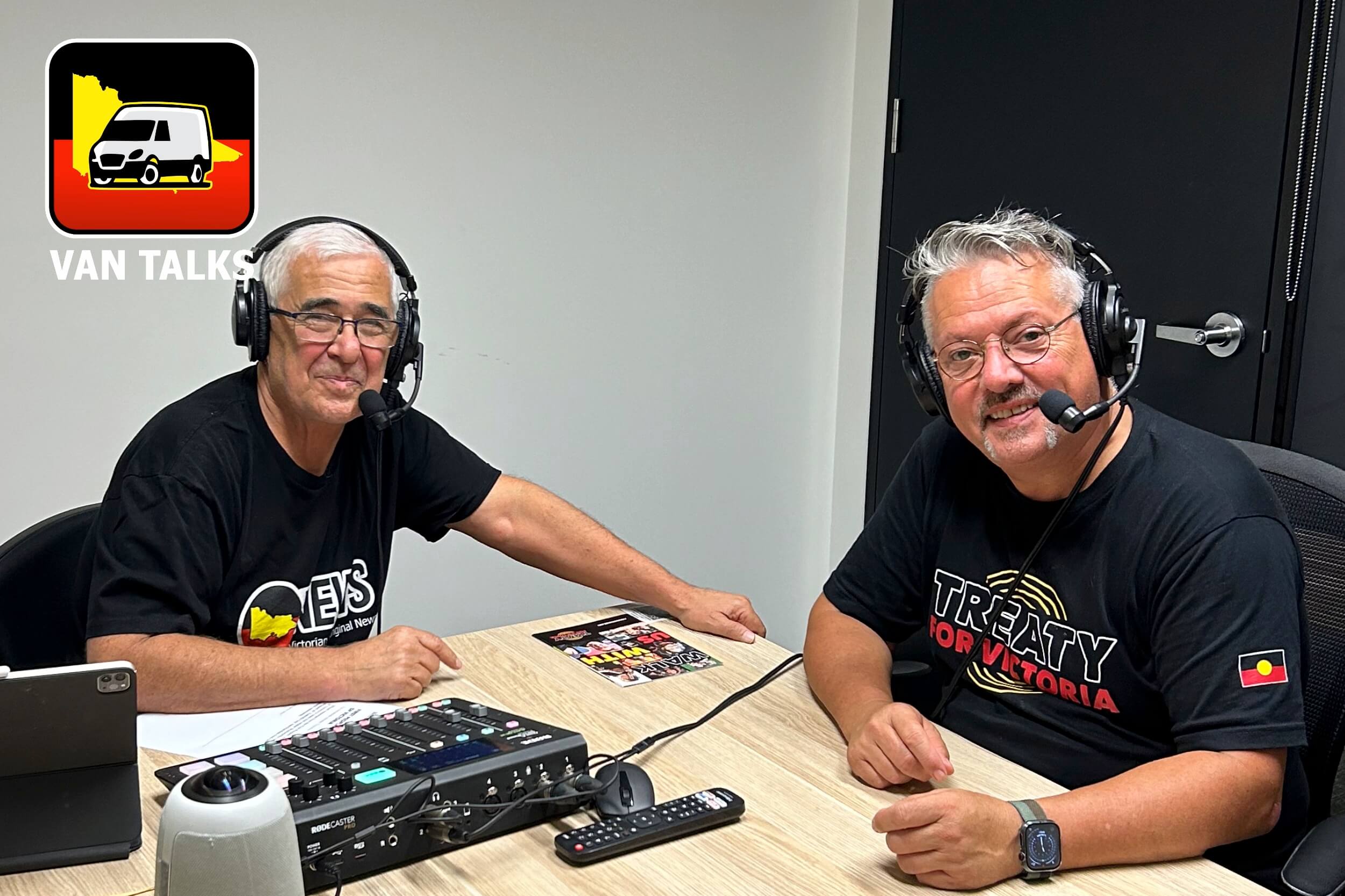
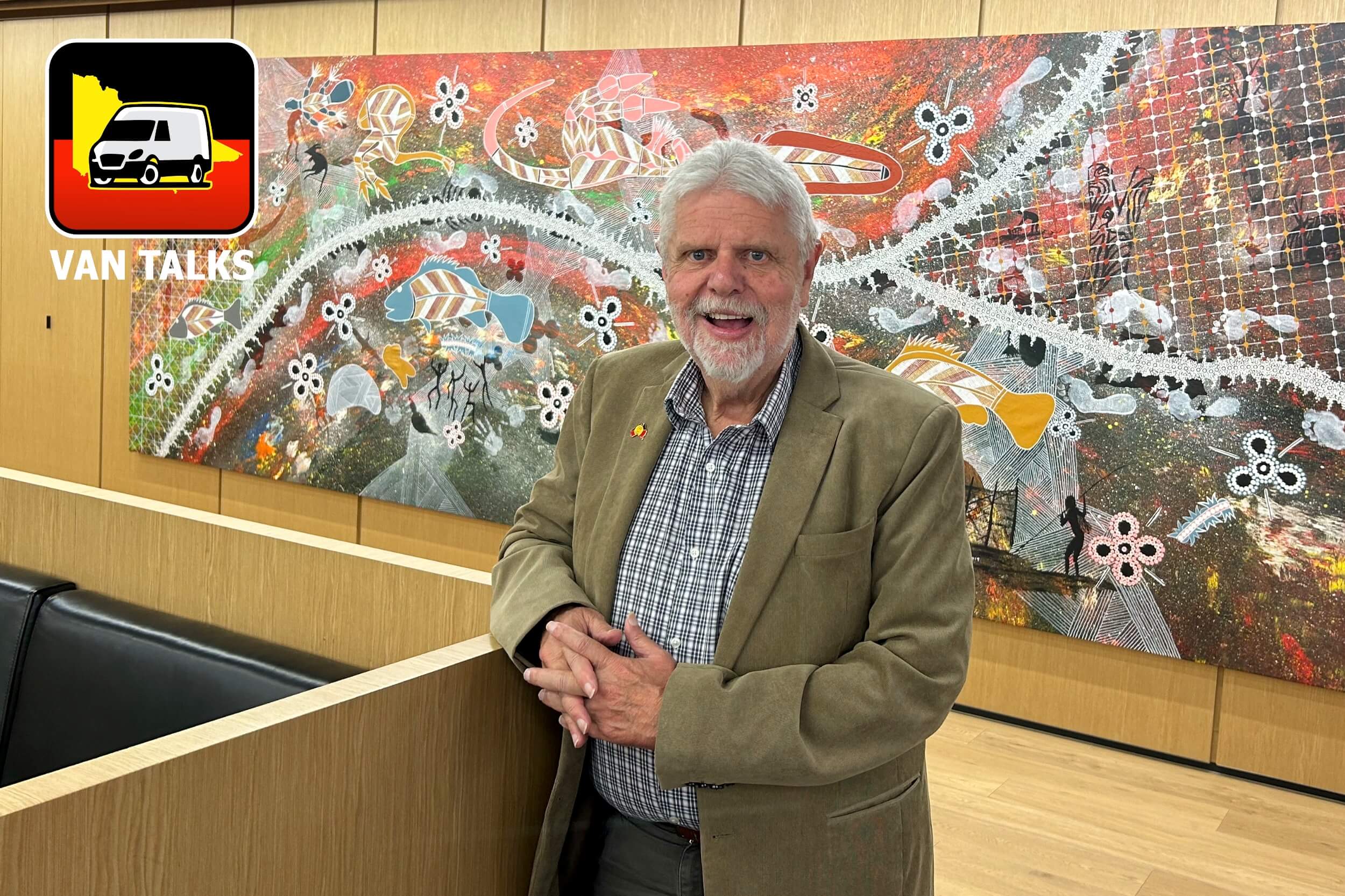
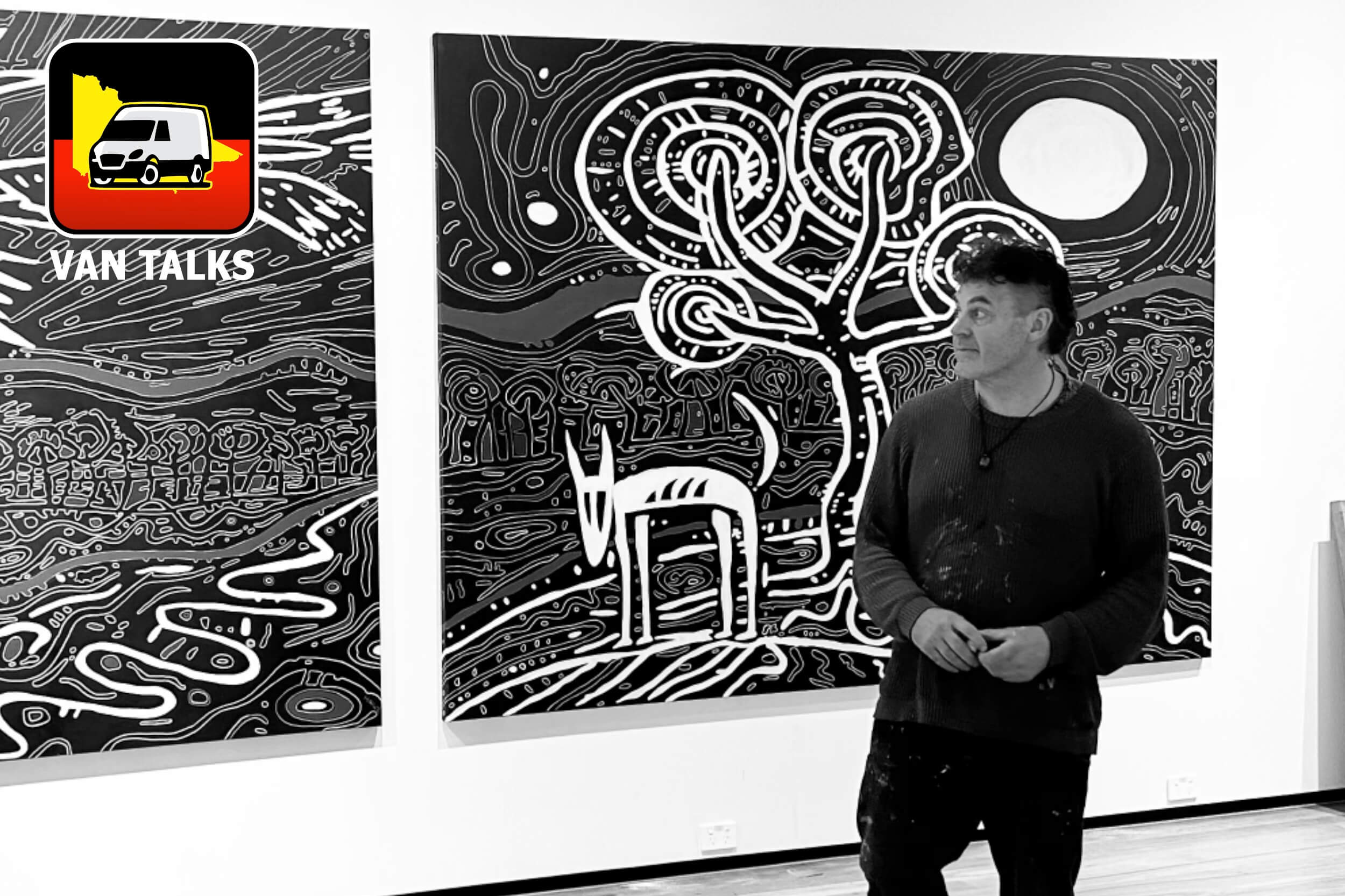
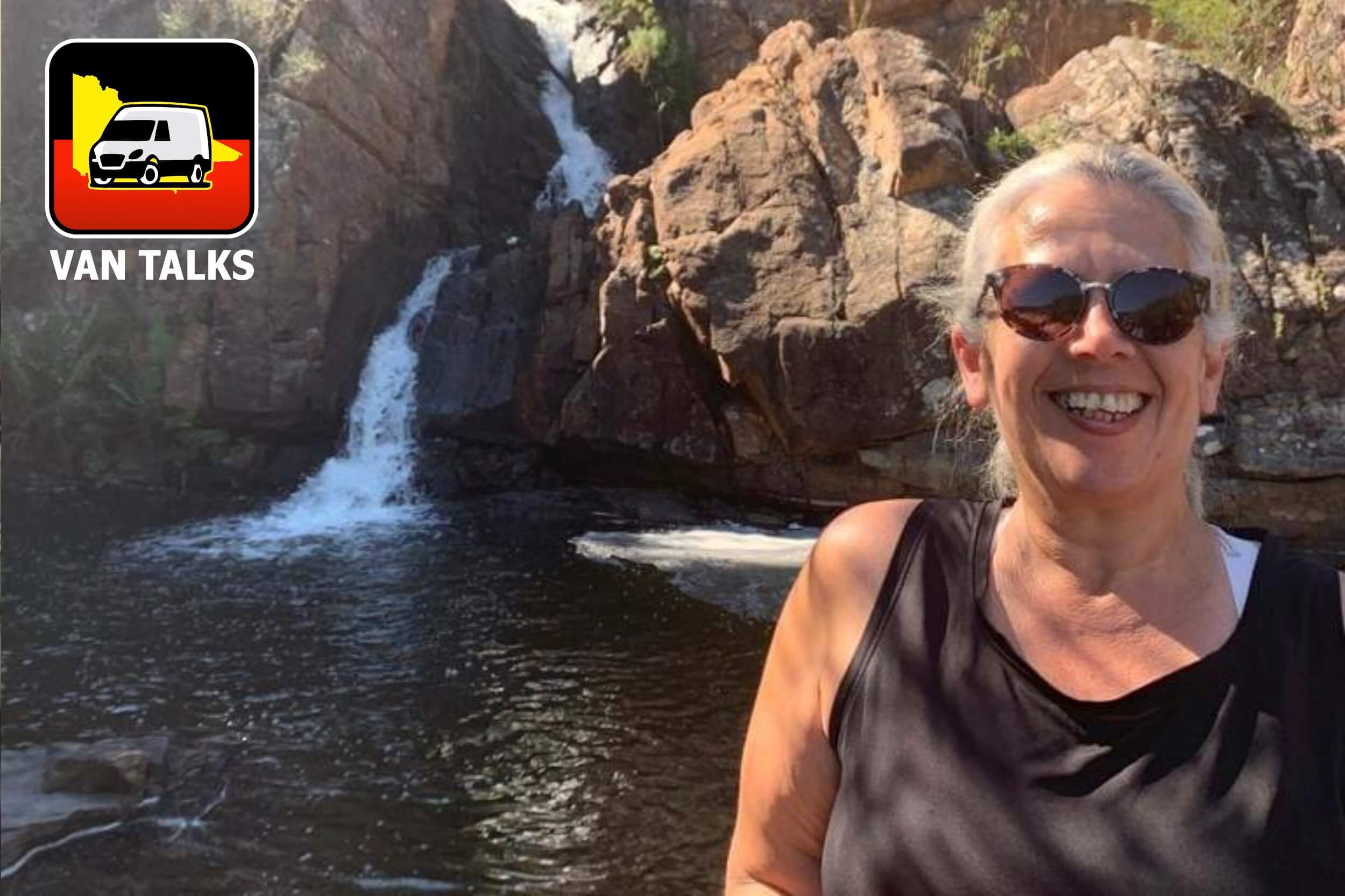
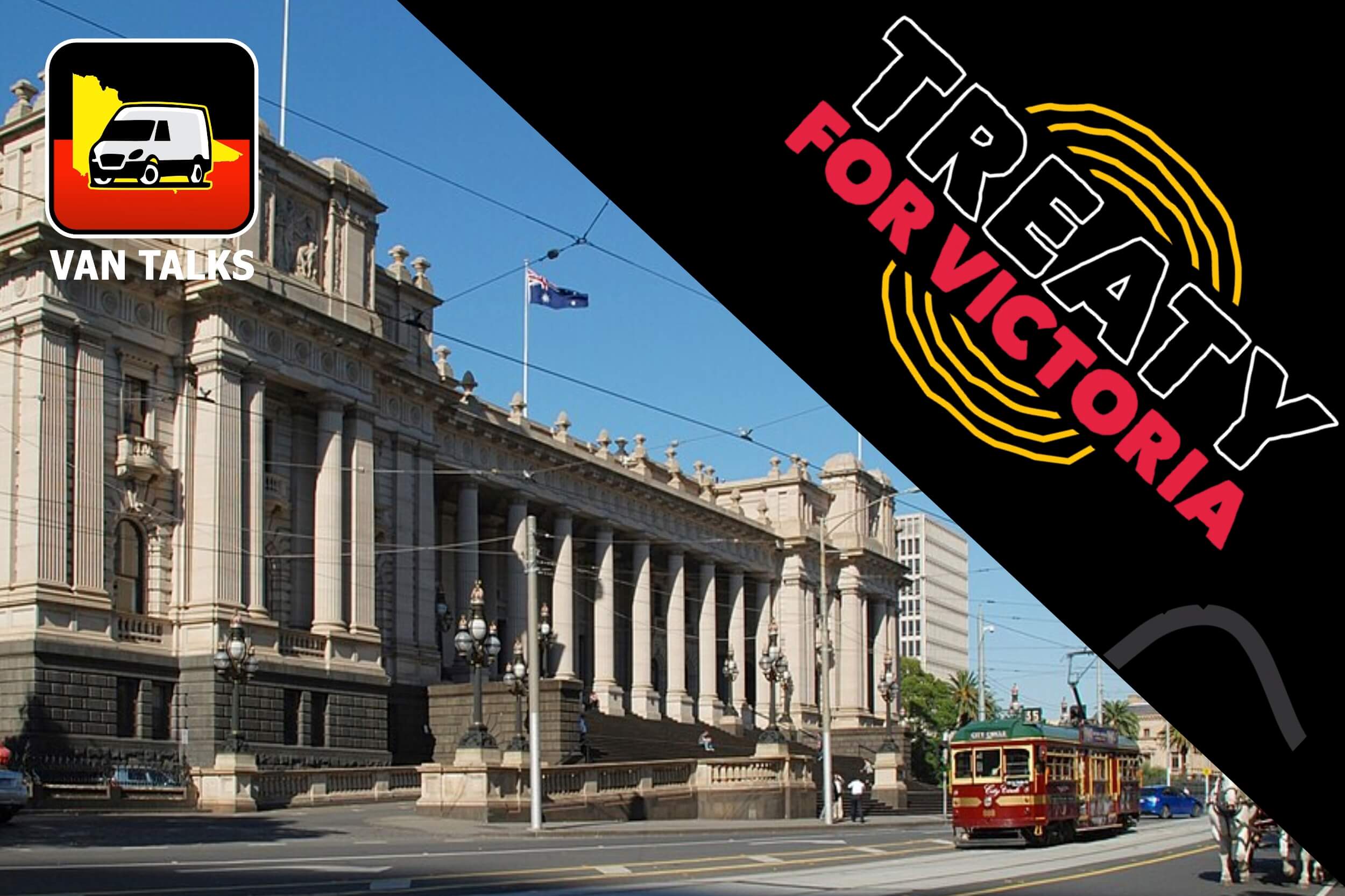

Found this interview very interesting and helpful in thinking about how Councils and Aboriginal communities can navigate a path forward that suits everyone and is respectful and encouraging of effort being made. Tha nk you Jason and Uncle Charles.
Found this interview very interesting and helpful in thinking about how Councils and Aboriginal communities can navigate a path forward that suits everyone and is respectful and encouraging of effort being made. Thank you Jason and Uncle Charles.